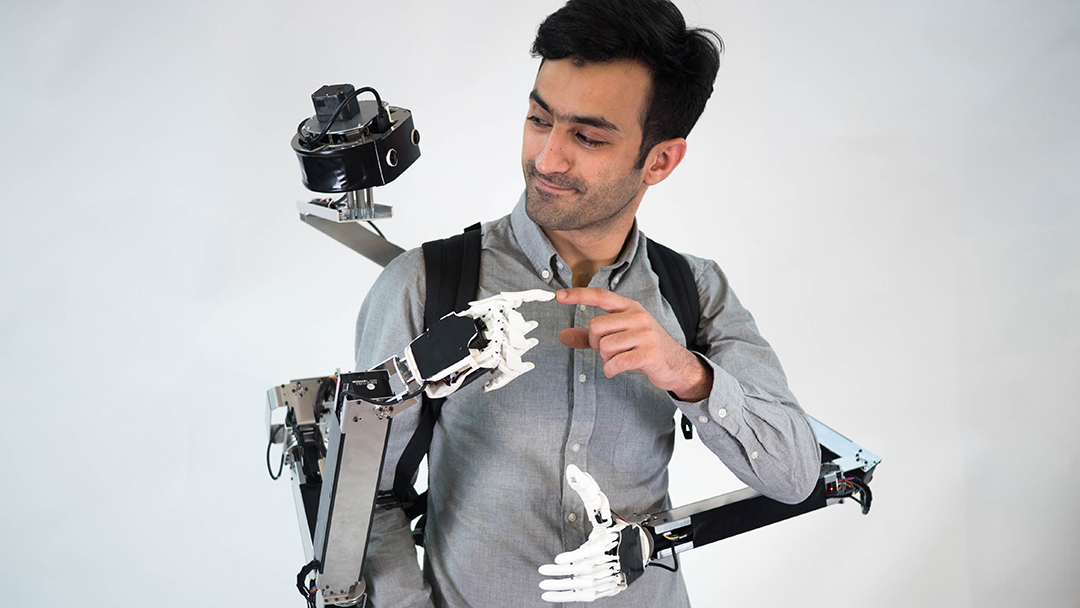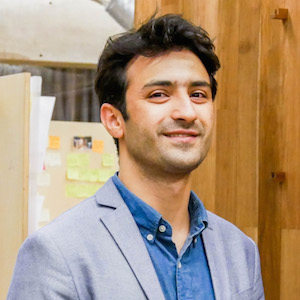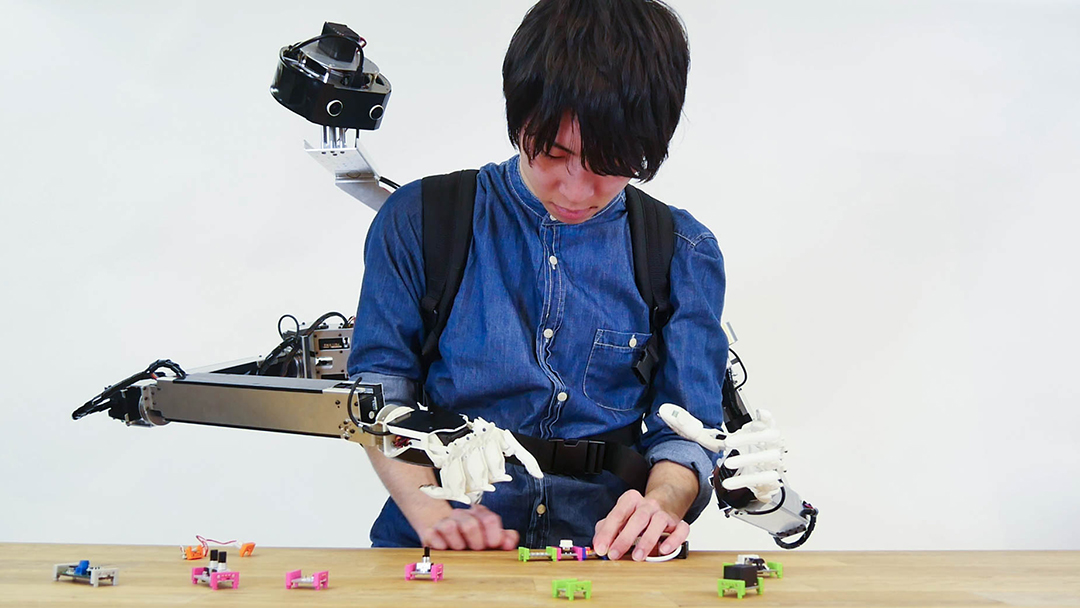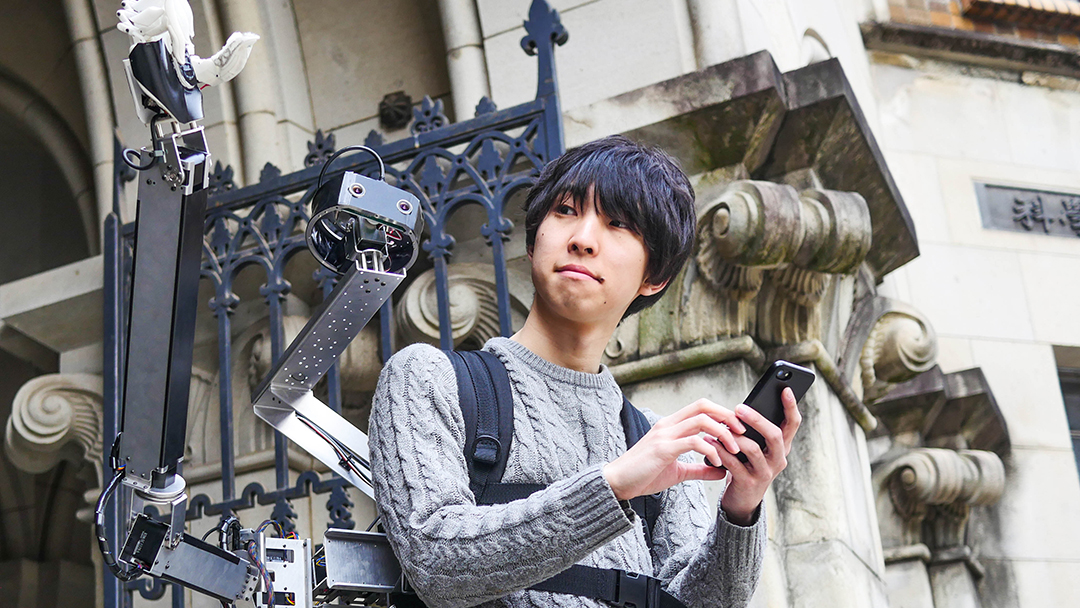 STUDENT AWARD
STUDENT AWARD
Fusion


Category : STUDENT
By MHD Yamen Saraiji, Tomoya Sasaki (Japan)
Fusion is a body surrogacy system that aims to reshape the way we communicate and collaborate. It explores a new radical way to use telepresence technology in a hybrid way by combining technology into our bodies and morphing the way of mutual collaboration. This project was initially started in order to enable physical collaboration between multiple people from the shared body or point of view, and how our bodies can be reshaped to augment collective actions with others. For example, an expert can guide new practitioners on how to operate certain instruments or to assist them remotely without the need of their physical presence. Also, elderly or mobility impaired people who want to keep practicing their work can engage with others effectively using this system. The first prototype of the system helped us to gain a better understanding of the potentials that we can gain using body sharing systems. For example, the arms can be mounted on the wrists as exoskeleton system, and guide surrogate’s arms motion physically to transfer new skills. We imagine this case is helpful at physically teaching others how to perform new actions. Also, for rehabilitative scenarios at which a therapist can assist patient’s physical practice.
The evolvement of Telepresence and Telexistence robotic research helped to define avatar systems that substitute our bodies beyond spatial limits. Such avatar systems carried new potentials to engineer our bodies and to augment our physical attributes radically. However, such approaches mainly focused on replicating the egocentric experience for the users by creating a new artificial body, and the way users operate their new body. Through Fusion, we present a new approach to body surrogacy systems that treat Telepresence systems as wearables — enabling embodied action sharing between multiple users. Such an approach provides new potentials for collaborative systems that enhance the quality of collective tasks, or to enable skill transfer from one user to another. We want to explore the new potentials of body sharing and the combination of multiple users into the same body.
We build several iterations and prototypes before realizing the final state of Fusion. Throughout this work, we developed a three-axis humanoid head that can be used for telepresence applications and matches human head sensory and motor properties (visual system, auditory, and movement). Also, we built wearable anthropomorphic artificial limbs that can be customized (using a hand or custom mount) depending on the target application of the system.
Our prototyping process involved a custom-built simulation environment for Fusion before making the hardware. Virtual reality was also a helpful factor to experience the arms and realizing matching motion and body mapping. Following that, we prototyped using 3D printers and CNC machines to fabricate the arms, head, and the container backpack. The simulation environment helped us also to ensure the safety of operation for the surrogate and avoid any potential injury when using the physical system.
The structure of the robot is made of 3D printed parts and CNC based fabricated links. The materials used for 3d Printing are mainly ABS and Nylon, while the CNC links are made using aluminum for the relatively lightweight and low cost. The system can run fully mobile using batteries and can last for 1 hour of operation. The overall weight of the system including batteries is 10kg, which can be reduced by using lighter materials for the structure and optimizing the prototype. The overall size of the system is similar to a backpack with two anthropomorphic arms and head.
JUDGES, COMMENTS
-
Satoshi Yoshiizumi
TAKT PROJECT Inc., Representative
Designer/Creative DirectorThis presents a situation in which you are not face to face with someone else's telepresence robot, but someone else has partially possessed you.
What kind of communication will this experience, which is also a little different from a situation in which your body has been expanded through prosthetics, give birth to? And what kind of life and way of living will that lead to?
At first glance, it is a piece that gives off a strong mechanical impression. At second glance, it is a piece that allows the viewer to approach new questions regarding how such humans exist.




